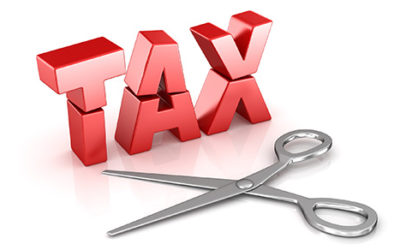Disclaimer: The information available to us is changing rapidly & key questions remain about how to implement the Paycheck Protection Program. Although the information below is provided based on our best judgement about what we know at this time, portions could already be outdated. We encourage you to check in with us for additional insights and updates.
Here’s what you need to know about the Paycheck Protection Program (PPP) from a high-level view
Small businesses and sole proprietorships affected by the coronavirus pandemic can apply for low interest, forgivable Small Business Administration loans under the Federal Paycheck Protection Program (PPP) beginning Friday, April 3rd.
Independent contractors and self-employed individuals can apply beginning April 10th.
The $349 billion program was enacted as part of last week’s Coronavirus Aid, Relief, and Economic Security (CARES) Act, P.L. 116-136. Under the program, small businesses with 500 or fewer employees including not-for-profits, veterans’ organizations, tribal concerns, self-employed individuals, sole proprietorships, and independent contractors are eligible for loans to pay up to eight weeks of payroll costs including benefits as well as other costs. Businesses with more than 500 employees are eligible in certain industries, Treasury said.
Loan payments will be deferred for six months. No collateral or personal guarantees are required. Neither the government nor lenders will charge small businesses any fees. Any loan principal not forgiven will have a maturity of 2 years and an interest rate of .5%.
An employer who receives a loan under the PPP is not eligible to also claim an employee retention credit under the CARES Act. The employee retention credit gives eligible employers whose business operations are fully or partially suspended due to the COVID-19 pandemic a credit against employment taxes equal to 50% of qualified wages (up to $10,000 in wages) for each employee.
Loan forgiveness
Loan forgiveness is based on the employer’s maintaining or quickly rehiring employees and maintaining salary levels, Treasury said in its overview documents. Forgiveness will be reduced if full-time headcount declines or if salaries and wages decrease.
PPP funds can also be used to pay interest on mortgages, rent, and utilities. Treasury noted that due to likely high demand for the program, at least 75% of the forgiven loan amount must have been used for payroll.
Loan Forgiveness Reductions
To encourage borrowers to retain and rehire employees, the amount eligible for forgiveness is reduced (not increased) based on workforce or employee salary reductions.
Workforce reductions – The loan forgiveness reduction based on workforce reductions is calculated by taking the amount eligible for forgiveness and multiplying it by the average number of full-time equivalent employees (FTEs) per month employed during the eight-week period beginning with the loan funding date over one of the following:
- the average number of FTEs employed per month from February 15, 2019 through June 15, 2019; or,
- the average number of FTEs employed per month from January 1, 2020 and ending on February 29, 2020.
The average number of full-time equivalent employees is determined by calculating the average number of full-time equivalent employees for each pay period falling within a month.
Example: 10 average employees during covered period/ 15 average employee during pre-covered period = 67%. Recipients forgivable amount will be reduced by 33%.
The average number of full-time equivalent employees is determined by calculating the average number of full-time equivalent employees for each pay period falling within a month.
Salary or wage reductions – The amount of the loan eligible for forgiveness is also reduced by the total reduction in salary or wages of any employee who earned less than $100,000 (as annualized) during 2019. The amount ineligible for forgiveness is any reduction in total salary or wages of any employee during the covered period [the eight-week period beginning on the loan funding date ] that is in excess of 25 percent of the total salary or wages of the employee during the most recent full quarter during which the employee was employed before the covered period.
Example: Employee “A” worked for Widgets, Inc. for all of 2019 and earned a salary of $75,000. On March 15, 2020, Employee “A” was laid off. For the period January 1, 2020 – March 31, 2020, Employee “A” earned $15,600. Employee “A” is not rehired. Because Employee “A” was not paid during the eight-week period following the loan funding date, Widgets, Inc. is not eligible for loan forgiveness for 75% of Employee “A”s wages for the quarter ended March 31, 2020, or $11,700 ($15,600 * 75%).
Relief from Forgiveness Reduction – Employers who rehire employees or restore wage reductions of employees by June 30, 2020 may receive relief from loan forgiveness reductions. Loan forgiveness reductions will not apply to any employer who between February 15, 2020 and April 26, 2020 (30 days after enactment of the CARES Act):
- reduced the number of FTEs during the period and not later than June 30, 2020 has eliminated the reduction in FTEs; or
- reduced salaries and wages for one or more employees during the period and eliminated the reduction in salary of the employee(s).
Example: Between February 15, 2020 and April 27, 2020 (30 days after enactment of the CARES Act), XYZ Manufacturing laid off 200 of its 210 workers. The company applied for and received a PPP loan of $6.5 million on May 15, 2020. From May 15, 2020 through June 30, 2020, XYZ hires 200 employees and has at least the same number of FTEs that it had during the period February 15, 2019–June 30, 2019 (or, at the company’s election, January 1, 2020-February 29, 2020). So long as XYZ uses the loan proceeds for its qualified purposes, XYZ will be eligible for forgiveness reduction relief.
Resources for additional details
Click on the links below to review the detailed information on the PPP –
- Department of Treasury top-line overview of the program
- Department of Treasury Information Sheet for Borrowers
- Department Frequently Asked Questions
- Small Business Administration Paycheck Protection Program Content
- Small Business Administration Interim Final Rule
- Chamber of Commerce Coronavirus Emergency Loans, Small Business Guide and Checklist.
How to prepare
Treasury urged those in need of funding to apply quickly, noting that the program has a cap and demand is likely to be high. It’s our understanding that you will submit your application with your current bank, most likely through their website.
We encourage you to be as prepared as possible so you have what you need when your lender is ready to begin accepting applications. Although many lenders will probably have you complete an electronic application on their website, you can prep one in advance – a sample can be found here on the U.S. Department of Treasury site. We anticipate the SBA will make some changes to the sample before they release the final draft. I don’t suggest you fill this out, but you can review it and see what will be needed.
If you own more than one business each one will require it’s own application. At least 75% of your loan request should be allocated to payroll costs.
The items below are a preliminary list of documents the lenders have indicated they may need with your application. We compiled this from several different banks, please contact your bank and verify what they will actually require.
Payroll Costs –
- Detailed information in order to calculate the average monthly payroll costs for your employees for the past 12 months, as outlined by the SBA.
- 2019 W-2’s & W-3, IRS Quarterly 940’s, 941 or 944 payroll tax reports.
- Detailed information in order to calculate the average monthly payroll costs for your employees for the past 12 months, as outlined by the SBA, including –
- Salary, wage, commission, or similar compensation Paid time off for each employee
- Payment required for the provisions of group health care benefits, including insurance premiums
- Payment of cash tip or equivalent
- Payment for vacation, parental, family, medical, or sick leave
- Allowance for dismissal or separation
- State and Local taxes assessed on the employee’s compensation for each employee
- Payment of any retirement benefit (401K plans, Simple IRA, SEP IRAs)
- The same information above for the 12 months ended December, 2019.
Financial Information –
- Documentation verifying payroll costs, mortgage interest, rent and utility payments you expect to incur over the 2 – month period after you receive funding.
- An explanation on how the current economic uncertainty makes the loan necessary to support your ongoing operations
- Annual revenue
Business Information & loan history –
- Mailing address, legal name, FEIN, other contact information
- Listing of affiliated companies or common ownership or management.
- Date you started your business
- Business owners information with 20% or more ownership interest (Name, Title, Ownership %, SSN, Address)
- Any history with the SBA where you were delinquent or defaulted?
- Did you also receive an SBA EIDL loan between January 31, 2020 and April 3, 2020? If so you will need those details.
Contact us for additional information or to discuss your specific situation.


